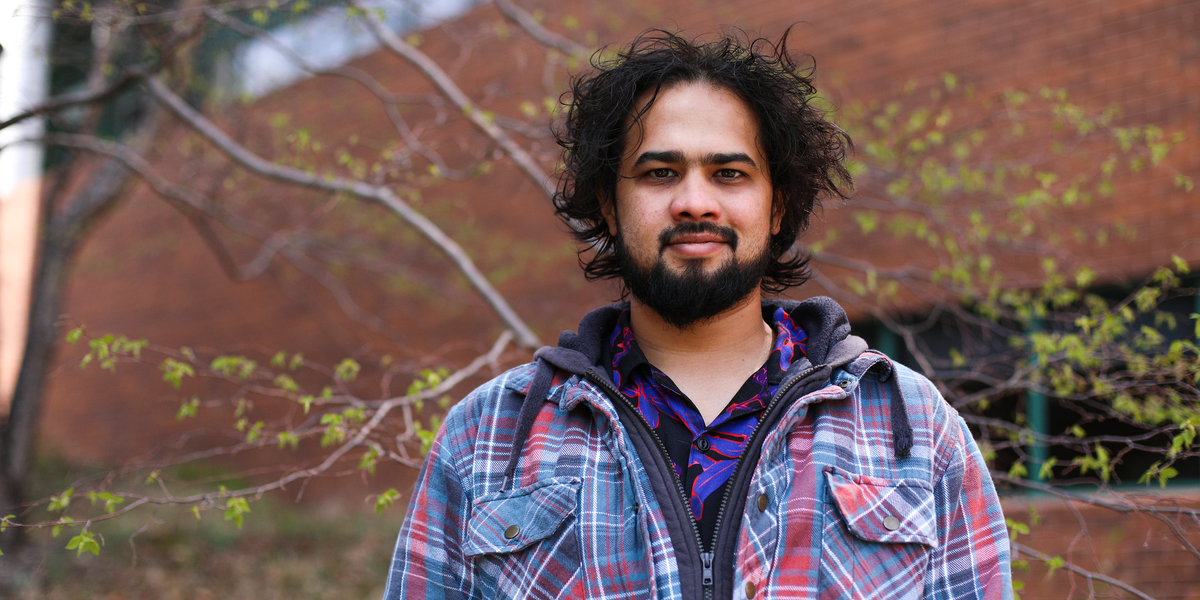
Siddhant Pusdekar is bringing science to life in the newsrooms of the Milwaukee Journal Sentinel this summer as a recipient of a fellowship designed to close the gap between research and the general public. As an AAAS Mass Media Science & Engineering Fellow, Pusdekar will work closely with seasoned journalists to cover local news with a scientific slant – anything from weather and wildlife to public health.
The fellowship is a perfect fit for students like Pusdekar who have a science background and are interested in refining their science communication skills. “I definitely applied to the fellowship with the hopes that I can pursue science journalism,” says Pusdekar, who’s also spending part of his summer preparing to defend his thesis as a Ph.D. candidate in the Ecology, Evolution and Behavior graduate program. “But I’m open to anything. There’s a lot of competition in the field, so I’m just trying to keep myself in a position where I can write.”
The announcement comes as no surprise to his family and friends – for the past three years, Pusdekar has been investing what little free time he has eking out an impressive portfolio of science-related media. He’s authored articles for publications such as Scientific American and The Wire Science and founded a podcast called The Purpose Podcast wherein he explores big-picture science topics with University of Minnesota faculty members.
Applying for the fellowship was a career move that just made sense. But if you would have asked Pusdekar 10 years ago about his goals, a career in science communication would not have even entered his mind. He’s always been curiosity-driven and self-motivated and as a kid growing up in an urban area of India he would often get in trouble for poking around giant “scary ant” hills and catching lizards. But college-age Pusdekar felt lots of pressure to stick to a more traditional academic track. And for a while, he felt okay pursuing science for science’s sake.
“To be honest, when I started doing research I thought science was supposed to be kind of esoteric,” says Pusdekar. After graduating with an undergraduate degree in life science in Mumbai, Pusdekar went on to get a master’s degree in neuroscience from King’s College in London, then took a two year post-baccalaureate position in Florida before moving to Minnesota for his doctorate degree. His research explores how animals perceive the visual world, whether it's dragonflies (who can move their heads to track prey faster than you can blink), robber flies, zebrafish, ferrets or cuttlefish.
But in 2021, Pusdekar took a science writing class that would change the course of his career. He went from getting bitten by bugs to wanting to write about them.
The course was led by Caitlin Looby, a science journalist who happens to be a previous AAAS Mass Media Science & Engineering Fellow and who currently works covering the Great Lakes at the Milwaukee Journal Sentinel where Pusdekar will be working this summer. Looby took special note of Pusdekar’s writing skills and fanned the flame that led him to explore a career in science writing.
“I like looking at things from different perspectives. That’s kind of why I wanted to study animals and the way they view the world,” says Pusdekar, who notes it can actually be easier to write about other people’s research than his own, because with his own research it’s “easy to get stuck in the weeds.” He enjoys tackling the unique challenges that come with communicating a wide range of scientific topics – even if it means he has to learn to be quick on his feet or write about issues muddled by conflicting narratives.
The fellowship will be fast-paced and he’ll have to anticipate the needs and questions of the general public – so if there’s a wildfire or a heatwave, he’ll have to pinpoint and broadcast information that will both alert people and assuage their concerns. “Writing with a deadline of a few hours is scary,” says Pusdekar. He’s written lots of long-form articles but has generally had time to reflect during the editing process.
“Reaching people where they are is an interesting challenge, but I don’t feel overwhelmed by that actually,” says Pusdekar. “I think one of the goals of science communication should be to reach people where they are other than to preach to people. There should be a way of cutting through the red herrings.” – Adara Taylor